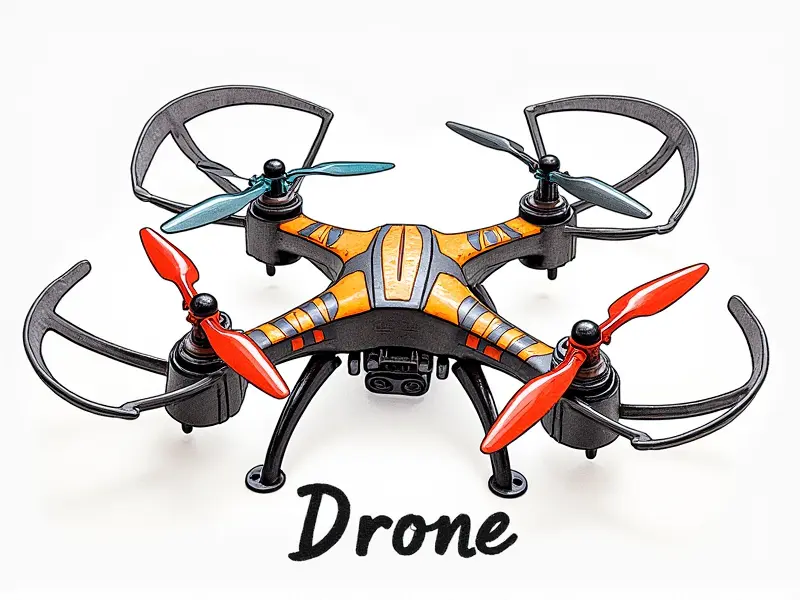Repair drone safety features

Top Safety Fixes for Drones
Drones are increasingly becoming an integral part of various industries, from aerial photography to delivery services. However, ensuring their safety is paramount to prevent accidents and protect both the drone and its operator. This article delves into essential repairs and maintenance tips that can enhance your drone's safety features.
Essential Drone Safety Repairs Explained
Drones are complex machines with numerous components that require regular inspection and repair. Understanding these crucial fixes is vital for maintaining optimal performance and safety:
- Battery Maintenance: Regularly check battery health to prevent overheating or failure during flight.
- Motor Health: Inspect motors for wear, ensuring they are properly lubricated and free from debris.
- Propeller Integrity: Replace damaged propellers immediately to avoid imbalance and instability in the air.
Safeguard Your Drone with These Tips
To safeguard your drone effectively, follow these tips:
- Regular Software Updates: Ensure that your drone's firmware is up-to-date to benefit from the latest safety features and bug fixes.
- Environmental Checks: Before each flight, inspect the surroundings for potential hazards such as power lines or trees.
- Flight Logbooks: Maintain detailed records of all flights and maintenance activities to track performance trends.
Quick Fixes to Boost Drone Safety
Several quick fixes can significantly enhance your drone's safety:
- Battery Replacement: Replace batteries every six months or after 50 flights, whichever comes first.
- Propeller Balance: Use a propeller balancer tool to ensure all propellers are perfectly balanced for smooth flight.
- Motor Cleaning: Clean motors regularly with compressed air and lubricate them as needed.
Ensuring Drone Safety Post-Repair
After any repair, it's crucial to ensure your drone is safe to fly:
- Thorough Testing: Conduct a series of ground tests and short flights to verify the effectiveness of repairs.
- Visual Inspection: Perform a detailed visual inspection for any signs of damage or wear that might have been overlooked.
- User Manual Compliance: Adhere strictly to manufacturer guidelines during all repair procedures.
Critical Safety Checks for Repaired Drones
Conduct these critical safety checks after any drone repairs:
- Battery Capacity Test: Measure battery capacity and ensure it meets the minimum requirements for safe operation.
- Motor Performance Evaluation: Assess motor performance to guarantee they are running efficiently without overheating.
- Propeller Stability Check: Confirm that all propellers rotate smoothly and there is no imbalance or vibration.
Enhance Drone Security After Repair
To further enhance security after repairs, consider the following steps:
- Data Encryption: Implement data encryption for any onboard cameras or sensors to protect sensitive information.
- Secure Firmware Updates: Use secure channels for firmware updates and verify their authenticity before installation.
- Physical Security Measures: Install physical locks on the drone storage area to prevent unauthorized access.
Protecting Your Drone: Post-Repair Safety Measures
To protect your drone after repairs, take these measures:
- Weatherproofing: Ensure all seals and covers are intact to safeguard against moisture damage.
- GPS Accuracy Check: Verify GPS accuracy by comparing the drone's reported location with actual coordinates.
- Battery Management System (BMS) Review: Inspect the BMS for proper functioning and calibration.
Simple Ways to Improve Drone Flight Safety
Simplify your approach to improving flight safety by following these straightforward methods:
- Regular Maintenance Schedule: Establish a regular maintenance schedule that includes all critical components.
- User Training Programs: Provide comprehensive training for operators on proper handling and emergency procedures.
- Safety Gear Usage: Encourage the use of safety gear such as helmets, gloves, and goggles during operations.
Essential Drone Repairs for Maximum Safety
To achieve maximum safety, prioritize these essential repairs:
- Battery Health Monitoring: Regularly monitor battery health using diagnostic tools to detect potential issues early.
- Motor Inspection and Replacement: Replace motors that show signs of wear or malfunction immediately.
- Propeller Alignment: Ensure propellers are perfectly aligned for optimal performance and stability.
Top Safety Checks for Drone Repairs
Conduct these top safety checks to ensure your drone is ready for safe operation after repairs:
- Battery Capacity Verification: Confirm that the battery capacity meets or exceeds manufacturer specifications.
- Motor Performance Test: Conduct a thorough motor performance test to identify any weaknesses or issues.
- Propeller Stability Assessment: Evaluate propeller stability by observing flight patterns and vibrations.
Conclusion
Maintaining the safety of your drone is crucial for both operational efficiency and regulatory compliance. By adhering to these repair and maintenance guidelines, you can significantly enhance the reliability and longevity of your drone while ensuring a safer flying experience. Regular inspections, timely repairs, and adherence to best practices will help you avoid costly accidents and downtime.

